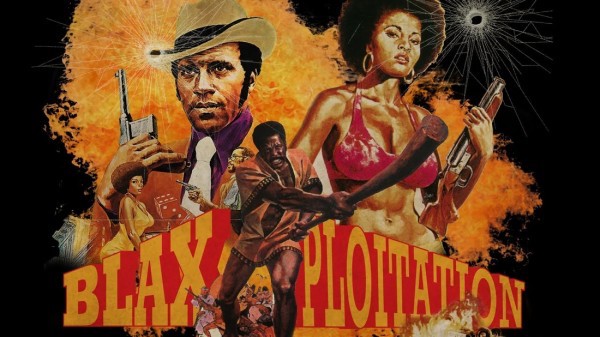
*TUCSON, Ariz. — The blaxploitation movies of early 1970s Hollywood occupy a unique space in film history by being, to many, as problematic as they are influential.
Derrais Carter, a University of Arizona researcher who studies and writes about Black culture, said films such as “Sweet Sweetback’s Baadasssss Song,” “Shaft” and “Superfly” were marketable films for Hollywood but fueled negative depictions of Black people. In the films, Black men were often depicted as “pimps, drug dealers and hustlers,” Black women were hyper-sexualized, and Black children were “often represented as ‘streetwise,’ which prematurely ages them out of innocence,” Carter said.
But the films also increased Black representation in the 1970s, and they undeniably influenced aspects of Black popular culture, from music to later films to fashion, said Carter, an assistant professor in the University of Arizona’s Department of Gender and Women’s Studies in the College of Social and Behavioral Sciences.
While blaxploitation film and its impacts have been well documented, the stories of the industry’s powerbrokers have largely gone untold. Carter, who has spent years researching the history of blaxploitation, was recently awarded $40,000 by the National Endowment for the Humanities, through the organization’s Awards for Faculty at Hispanic-Serving Institutions program. The award will allow Carter to research and write a book that will investigate the characters and stories behind blaxploitation film.
Carter spoke about his research and what new ground he plans to cover in his book.
MORE NEWS: K. Michelle Announces Exit From ‘Love and Hip Hop’ for New Lifetime Show
Q: How do you characterize your research?
A: My work is generally thinking about Black interior life and Black culture in the 20th and 21st centuries. I’m interested in the kind of life-worlds that Black folks create, both interpersonally and also in art.
Q: Your work involves investigating the history of blaxploitation film. What is blaxploitation?
A: The concept of blaxploitation, generally, was conceived by a man named Junius Griffin in the early ’70s. Griffin used the portmanteau of “Black” and “exploitation” to highlight the Hollywood film industry’s mistreatment of Black people. Around the time, Hollywood was going broke, major studios were auctioning iconic memorabilia, and the success of films like “Shaft,” “Cotton Comes to Harlem” and “Sweet Sweetback’s Baadasssss Song,” the film by Melvin Van Peebles, let Hollywood executives know that it’s kind of marketable to cater films to Black people. So, there was a huge push in the early to mid-’70s to take popular films, make offshoot or “B” versions of those films that are all-Black or aimed at Black audiences. So, “blaxploitation” is both the historical and critical term that’s used to talk about that era in the ’70s when these kinds of films were made.
Q: What kind of stories will be included in this book?
A: The first distinction between the book I’m writing and most of the scholarship on blaxploitation is that I’m writing a non-film studies blaxploitation book. So many people – necessarily – make or construct projects around what’s being represented in film. I teach that work; I consume that work constantly. But I’m also left wondering about the kinds of Black cultural debates that were happening behind the scenes.
For instance, I haven’t even seen a book chapter that’s devoted to unpacking the career of Junius Griffin, the man who coined the term blaxploitation. I went to Johns Hopkins University last year, where they have Griffin’s papers, and did some archival work. As I’m combing through it, I’m like, “This guy was a Pulitzer Prize nominee.” He was also with the Southern Christian Leadership Conference, helping Martin Luther King Jr. with media work. I’m like, “This guy was a powerhouse in his own right.” I keep trying to figure out how it is that this random cat, who was the head of the Hollywood NAACP, had enough clout to introduce a term and then have it take off. And then I’m like, “Oh, he was well connected beforehand.” So, one of the stories that I’m telling is the story of Junius Griffin.
Another character who I love is a blues singer-turned-actress-turned-golfer-turned-activist named Maggie Hathaway. She’s the reason we have the NAACP Image Awards, which have been around for decades. She’s also the reason why L.A. golf courses are integrated. Of the few stories that I’ve cobbled together about Hathaway, my favorite, by far, is when she integrated the first golf club. She does all this campaigning and protesting to ensure that Black golfers get some respect, and they can join these private clubs. This club that she wanted to be a part of reluctantly admitted 12 new members and had a whole ceremony. Maggie Hathaway – who was not invited – attended the ceremony. She goes in and listens to them make their grand statement and then formally induct 12 people. When her name is not read aloud, she looks around and then walks over to the table where the cake is, flips the table, starts throwing chairs, throwing champagne bottles, busts out all the windows in the clubhouse – all this while she’s wielding a pistol. She wreaks havoc on this entire clubhouse, walks out in front with her gun in her purse, and then waits for the police. … So, I’m so very curious about this Black woman who is affiliated with respectable civil rights organizations and Black protest traditions, but also the blues and also cabaret. She’s the kind of person who was absolutely there on the ground, but I haven’t come across her. I can’t recall one major study of blaxploitation that talks about Maggie Hathaway.
Q: What does this new $40,000 award from the National Endowment for the Humanities allow you to do in terms of this book?
A: Breathe easier and rest well. That’s the most immediate thing. I love teaching – I got into the academy because I wanted to teach. But this award frees me up from teaching for a whole academic year, so I will be a full-time researcher and writer, which is major. It will allow me to wrap up a few shorter projects, but most importantly, make some headway on this one. And so, especially with COVID and quarantine, it makes it very difficult to travel to the different archives and research collections that I was supposed to visit, or even do on-the-ground interviews with descendants of folks who were living at the time. So, I’ll spend the next few months regrouping, rethinking my approach. But ultimately, from August to April, May of next year, I’ll be writing full time, revising and trying to find a publisher for the book.
source: Kyle Mittan / University (of Arizona) Communications
We Publish News 24/7. Don’t Miss A Story. Click HERE to SUBSCRIBE to Our Newsletter Now!







